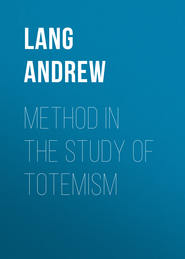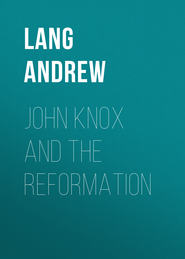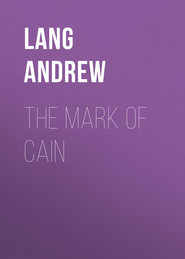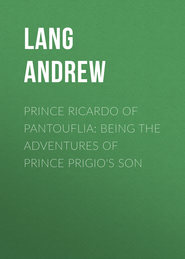По всем вопросам обращайтесь на: info@litportal.ru
(©) 2003-2024.
✖
The Mystery of Mary Stuart
Настройки чтения
Размер шрифта
Высота строк
Поля
See Letter and Crawford’s Deposition in Appendix (#pgepubid00028). Mr. Henderson, in his Casket Letters (second edition, pp. xxvi, xxvii, 82-84), argues that the interdependence of Crawford’s Deposition and of Letter II. ‘does not seem to be absolutely proved.’ Perhaps no other critic doubts it.
343
Goodall, ii. 246.
344
The English runs, ‘Indeede that he had found faulte with me…’ Mr. Bain notes ‘a blank left thus’ (Bain, ii. 723).
345
Lennox MSS.
346
Mr. Frazer-Tytler, who did not enter into the controversy, supposed that Crawford’s Deposition was the actual written report, made by him to Lennox in January 1567. If so, Letter II. is forged.
347
Mr. Henderson writes (Casket Letters, second edition, p. xxvi): ‘It must be remembered that while Crawford affirms that he supplied Lennox with notes of the conversation immediately after it took place, he does not state that the notes were again returned to him by Lennox in order to enable him to form his deposition.’ How else could he get them, unless he kept a copy? ‘It is also absurd to suppose that Lennox, on June 11, 1568, should have written to Crawford for notes which he had already in his own possession.’ But Lennox did not do that; he asked, not for Mary’s conversation with Darnley, but for Crawford’s with Mary, which Crawford never says that he wrote down ‘at the time.’ Mr. Henderson goes on to speak of ‘the notes having been lost,’ and ‘these documents had apparently been destroyed’ (p. 84), of which I see no appearance.
348
Goodall, ii. 246. Maitland Club Miscellany, iv. pt. i. p. 119. It will be observed that while Crawford swears to having written down Darnley’s report for Lennox ‘at the time,’ he says that he ‘caused to be made’ the writing which he handed in to the Commissioners, ‘according to the truth of his knowledge.’ Crawford’s Deposition handed in to the Commissioners, in fact, has been ‘made,’ that is, has been Anglicised from the Scots; this is proved by the draft in the Lennox Papers. This is what Crawford means by saying that he ‘caused it to be made.’ There is a corrected draft of the declaration in the Lennox MSS., but Crawford’s original autograph text, ‘written with his hand’ (in Scots doubtless), was retained by the Lords (Goodall, ii. 88).
349
The Deposition, in Bain, ii. 313, is given under February, 1567, but this copy of it, being in English, cannot be so early.
350
Historia, fol. 213. Yet the Lennox dossier represents Darnley as engaged, at this very time, at Stirling, in a bitter and angry quarrel with Mary. He may have been in contradictory moods: Buchanan omits the mood of fury.
351
Maitland of Lethington, ii. 337.
352
Mary to Norfolk, Jan. 31, 1570. Labanoff, iii. 19.
353
Labanoff, iii. 62.
354
The prosecution is in rather an awkward position as to Bothwell’s action when he returned to Edinburgh, after leaving Mary at Callendar, which we date January 21, and they date January 23. Cecil’s Journal says, ‘January 23 … Erle Huntly and Bothwell returnit that same nycht to Edynt [Edinburgh] and Bothwell lay in the Town.’ The Book of Articles has ‘Bot boithuell at his cuming to Edinburgh ludgit in the toun, quhair customably he usit to ly at the abbay,’ that is, in Holyrood (Hosack, i. 534). The author of the Book of Articles clearly knew Cecil’s Journal; perhaps he wrote it. Yet he makes Mary stay but one night at Callendar; Cecil’s Journal makes her stay two nights. However, our point is that both sources make Bothwell lie in the town, not at Holyrood, on the night of his return from Callendar. His object, they imply, was to visit Kirk o’ Field privately, being lodged near it and not in his official rooms. But here they are contradicted by Paris, who says that when he brought Mary’s first Glasgow Letter to Bothwell he found him in his chambers at Holyrood (Laing, ii. 282).
355
Nelson, according to Miss Strickland (Mary Stuart, ii. 178, 1873), left Edinburgh for England, and was detained by Drury for some months at Berwick. For this Miss Strickland cites Drury to Cecil, Berwick, February 15, 1567, a letter which I am unable to find in the MSS. But the lady is more or less correct, since, on February 15, Mary wrote to Robert Melville, in England, charging him, in very kind terms, to do his best for Anthony Standen, Darnley’s friend, who was also going to England (Frazer, The Lennox, ii. 7). A reference to Cal. For. Eliz. viii. 193, No. 1029, shows that a letter of Mary to Drury, asking free passage for Standen and four other Englishmen, is really of March 15, not of February 15. Again, a letter of March 8, 1567, from Killigrew, at Edinburgh, to Cecil, proves that ‘Standen, Welson, and Guyn, that served the late king, intend to return home when they can get passport’ (Bain, ii. 347, No. 479). Now ‘Welson’ is obviously Nelson. On June 16, Drury allowed Standen to go south (Cal. For. Eliz. viii. 252, No. 1305). Nelson, doubtless, also returned to Lennox. It is odd that Lennox, having these two witnesses, should vary so much, in his first indictment, from the accepted accounts of events at Kirk o’ Field. This Anthony Standen is the younger of the two brothers of the same name. The elder was acting for Darnley in France at the time of the murder. He lived to a great age, recounting romances about his adventures.
356
Mr. Hay Fleming suggests that ‘Jhone a Forret’ may be Forret of that ilk – of Forret near Cairnie. Of him I have no other knowledge.
357
Hatfield MSS. Calendar, i. 376, 377.
358
Melville, Memoirs, 173, 174. Hosack’s Mary, i. 536 (The Book of Articles). Anderson, ii. 18, 19 (Detection). Cecil’s Journal, under date Saturday, February 8, has ‘She confronted the King and my lord of Halyrodhouse conforme to hir letter wryttin the nycht before:’ that is, this Letter III.
359
Mr. Hosack makes an error in averring that no letter as to this intrigue was produced at Westminster or later; that the letter was only shown at York in October, 1568. There and then Moray’s party ‘inferred, upon a letter of her own hand, that there was another meane of a more cleanly conveyance devised to kill the King’ (Goodall, ii. 142; Hosack, i. 409, 410). The letter was that which we are now considering.
360
The Scots has ‘handling.’ The Cambridge MS. of the Scots translation reads ‘composing of thame,’ from ‘le bien composer de ceux’ in the original French.
361
Dr. Bresslau notes several such coincidences, but stress cannot be laid on phrases either usual, or such as a forger might know to be favourites of Mary’s.
362
Laing, ii. 286.
363
Mary Queen of Scots, vol. ii. No. 63.
364
‘Je m’en deferay au hazard de la faire entreprandre:’ the translators, not observing the gender referring to the maid, have blundered.
365
It appears that they did not officially put in this compromising Ainslie paper. Cecil’s copy had only such a list of signers ‘as John Read might remember.’ His copy says that Mary approved the band on May 14, whereas the Lords allege that she approved before they would sign. Bain, ii. 321, 322. A warrant of approval was shown at York. Bain, ii. 526. Cf. supra, p. 254, note 3.
366
Labanoff, ii. 32-44.
367
343
Goodall, ii. 246.
344
The English runs, ‘Indeede that he had found faulte with me…’ Mr. Bain notes ‘a blank left thus’ (Bain, ii. 723).
345
Lennox MSS.
346
Mr. Frazer-Tytler, who did not enter into the controversy, supposed that Crawford’s Deposition was the actual written report, made by him to Lennox in January 1567. If so, Letter II. is forged.
347
Mr. Henderson writes (Casket Letters, second edition, p. xxvi): ‘It must be remembered that while Crawford affirms that he supplied Lennox with notes of the conversation immediately after it took place, he does not state that the notes were again returned to him by Lennox in order to enable him to form his deposition.’ How else could he get them, unless he kept a copy? ‘It is also absurd to suppose that Lennox, on June 11, 1568, should have written to Crawford for notes which he had already in his own possession.’ But Lennox did not do that; he asked, not for Mary’s conversation with Darnley, but for Crawford’s with Mary, which Crawford never says that he wrote down ‘at the time.’ Mr. Henderson goes on to speak of ‘the notes having been lost,’ and ‘these documents had apparently been destroyed’ (p. 84), of which I see no appearance.
348
Goodall, ii. 246. Maitland Club Miscellany, iv. pt. i. p. 119. It will be observed that while Crawford swears to having written down Darnley’s report for Lennox ‘at the time,’ he says that he ‘caused to be made’ the writing which he handed in to the Commissioners, ‘according to the truth of his knowledge.’ Crawford’s Deposition handed in to the Commissioners, in fact, has been ‘made,’ that is, has been Anglicised from the Scots; this is proved by the draft in the Lennox Papers. This is what Crawford means by saying that he ‘caused it to be made.’ There is a corrected draft of the declaration in the Lennox MSS., but Crawford’s original autograph text, ‘written with his hand’ (in Scots doubtless), was retained by the Lords (Goodall, ii. 88).
349
The Deposition, in Bain, ii. 313, is given under February, 1567, but this copy of it, being in English, cannot be so early.
350
Historia, fol. 213. Yet the Lennox dossier represents Darnley as engaged, at this very time, at Stirling, in a bitter and angry quarrel with Mary. He may have been in contradictory moods: Buchanan omits the mood of fury.
351
Maitland of Lethington, ii. 337.
352
Mary to Norfolk, Jan. 31, 1570. Labanoff, iii. 19.
353
Labanoff, iii. 62.
354
The prosecution is in rather an awkward position as to Bothwell’s action when he returned to Edinburgh, after leaving Mary at Callendar, which we date January 21, and they date January 23. Cecil’s Journal says, ‘January 23 … Erle Huntly and Bothwell returnit that same nycht to Edynt [Edinburgh] and Bothwell lay in the Town.’ The Book of Articles has ‘Bot boithuell at his cuming to Edinburgh ludgit in the toun, quhair customably he usit to ly at the abbay,’ that is, in Holyrood (Hosack, i. 534). The author of the Book of Articles clearly knew Cecil’s Journal; perhaps he wrote it. Yet he makes Mary stay but one night at Callendar; Cecil’s Journal makes her stay two nights. However, our point is that both sources make Bothwell lie in the town, not at Holyrood, on the night of his return from Callendar. His object, they imply, was to visit Kirk o’ Field privately, being lodged near it and not in his official rooms. But here they are contradicted by Paris, who says that when he brought Mary’s first Glasgow Letter to Bothwell he found him in his chambers at Holyrood (Laing, ii. 282).
355
Nelson, according to Miss Strickland (Mary Stuart, ii. 178, 1873), left Edinburgh for England, and was detained by Drury for some months at Berwick. For this Miss Strickland cites Drury to Cecil, Berwick, February 15, 1567, a letter which I am unable to find in the MSS. But the lady is more or less correct, since, on February 15, Mary wrote to Robert Melville, in England, charging him, in very kind terms, to do his best for Anthony Standen, Darnley’s friend, who was also going to England (Frazer, The Lennox, ii. 7). A reference to Cal. For. Eliz. viii. 193, No. 1029, shows that a letter of Mary to Drury, asking free passage for Standen and four other Englishmen, is really of March 15, not of February 15. Again, a letter of March 8, 1567, from Killigrew, at Edinburgh, to Cecil, proves that ‘Standen, Welson, and Guyn, that served the late king, intend to return home when they can get passport’ (Bain, ii. 347, No. 479). Now ‘Welson’ is obviously Nelson. On June 16, Drury allowed Standen to go south (Cal. For. Eliz. viii. 252, No. 1305). Nelson, doubtless, also returned to Lennox. It is odd that Lennox, having these two witnesses, should vary so much, in his first indictment, from the accepted accounts of events at Kirk o’ Field. This Anthony Standen is the younger of the two brothers of the same name. The elder was acting for Darnley in France at the time of the murder. He lived to a great age, recounting romances about his adventures.
356
Mr. Hay Fleming suggests that ‘Jhone a Forret’ may be Forret of that ilk – of Forret near Cairnie. Of him I have no other knowledge.
357
Hatfield MSS. Calendar, i. 376, 377.
358
Melville, Memoirs, 173, 174. Hosack’s Mary, i. 536 (The Book of Articles). Anderson, ii. 18, 19 (Detection). Cecil’s Journal, under date Saturday, February 8, has ‘She confronted the King and my lord of Halyrodhouse conforme to hir letter wryttin the nycht before:’ that is, this Letter III.
359
Mr. Hosack makes an error in averring that no letter as to this intrigue was produced at Westminster or later; that the letter was only shown at York in October, 1568. There and then Moray’s party ‘inferred, upon a letter of her own hand, that there was another meane of a more cleanly conveyance devised to kill the King’ (Goodall, ii. 142; Hosack, i. 409, 410). The letter was that which we are now considering.
360
The Scots has ‘handling.’ The Cambridge MS. of the Scots translation reads ‘composing of thame,’ from ‘le bien composer de ceux’ in the original French.
361
Dr. Bresslau notes several such coincidences, but stress cannot be laid on phrases either usual, or such as a forger might know to be favourites of Mary’s.
362
Laing, ii. 286.
363
Mary Queen of Scots, vol. ii. No. 63.
364
‘Je m’en deferay au hazard de la faire entreprandre:’ the translators, not observing the gender referring to the maid, have blundered.
365
It appears that they did not officially put in this compromising Ainslie paper. Cecil’s copy had only such a list of signers ‘as John Read might remember.’ His copy says that Mary approved the band on May 14, whereas the Lords allege that she approved before they would sign. Bain, ii. 321, 322. A warrant of approval was shown at York. Bain, ii. 526. Cf. supra, p. 254, note 3.
366
Labanoff, ii. 32-44.
367











